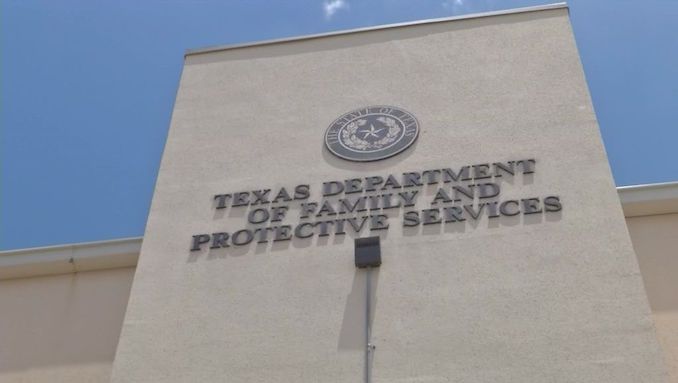
More Texas foster children slept in state offices or hotels in October and November of 2020 than at any point since 2016 when the state began keeping consistent records of children without placements, and the Texas Department of Family and Protective Services says the COVID-19 pandemic is partially to blame.
When a child is removed from his or her home and cannot immediately be placed in a foster home or residential treatment center, the state has to find them temporary shelter. Sometimes that means the kids have to spend the night in caseworkers’ offices. In November, 126 kids spent at least two nights in state offices, hotels or other temporary housing locations. In October, the number was 119. Before this spike, the number of children without placements per month only breached 100 once, in May 2019.
“As mitigation efforts to prevent the spread of COVID-19 intensified, our usual child placement processes had to be quickly and dramatically altered and that affected capacity,” said Marissa Gonzales, a spokeswoman for the Texas Department of Family and Protective Services. “As schools and childcare centers closed, foster and kinship caregivers began to care for children and youth full-time while navigating newly complicated work and home life schedules. These caregivers, as well as residential providers, had to assess their individual situations which sometimes disrupted their ability to accept new children in their homes and programs.”
Gonzales said the pandemic also stalled recruitment of new foster families.
“Child placing agencies had to reevaluate how to conduct screenings and how to provide necessary trainings to prospective families,” Gonzales said. “Some families chose to halt their involvement as they tended to their own personal and family needs, which impacted their ability to care for others.”
Will Francis, executive director for the Texas Chapter of the National Association of Social Workers, detailed how emotionally traumatizing it can be for a foster child to be told there’s not a space for them.
“This is a physical and symbolic indicator that you have no home, no one wants you, there is no caregiver, there is no parent, there is no adult, there is no one who’s going to open their door to you,” Francis said. “That just reinforces the idea that your value is less than others.”
With one month left to go, the number of children without placements in 2020 has already surpassed 2019. So far, 689 children have spent two or more nights in state offices, hotels or temporary housing.
The state’s numbers don’t include children who spent one night or less in offices. Kristy Roberts, a foster mom in Weatherford, Texas, is fostering 11- and 12-year-old siblings who spent nearly 12 hours at a state office in North Texas in August after being removed from their home. The children were moved in the middle of the night to a residential treatment center where they spent the next six weeks before being placed with Roberts.
“It was just scary,” Roberts said of the kids’ time at the office. “They’re still in that traumatic place. They don’t even know what’s going on. They’ve heard of foster care, but they don’t know what to expect. They don’t know why they’re really there. All they know is what life has been for them, and that’s gone.”
Roberts said their stay at the residential treatment center was even more traumatic. The kids said they received death threats and were subjected to a stringent schedule and regular bed searches.
“It operated kind of like a juvenile hall or something,” Roberts said. “I’ve got a 12-year-old girl who now knows what sex trafficking is and self-harm, you know, things that they’re gonna start learning about, but they didn’t need to know about that stuff yet.”
On Thursday, Texas set a single day record for new COVID-19 cases with 16,864 confirmed cases and 3,524 probable cases. But Francis said that is just one of a number of factors that keeps Texas perpetually at risk of running out of capacity for foster kids. Kinship caregivers aren’t paid enough, there aren’t enough homes that can handle high-needs kids and the state relies too much on residential care, he said.
The state similarly acknowledges that the recent spike in children without placements is caused by more than one thing.
“It’s complex,” said Patrick Crimmins, a spokesman for the Texas Department of Family and Protective Services. “We have COVID, a 10-year-old federal foster care lawsuit, community-based care in some areas but not others, a system that relies entirely on private providers, of course a chronic lack of capacity for high-needs children and youth going back many years, and other factors.”
Texas lost that federal lawsuit in 2015, and the judge in the case has held the state in contempt several times for failure to make progress on mandated improvements to the system, including an order handed down over the weekend.
The Texas Department of Family and Protective Services has compiled a list of strategies to address its capacity needs including reaching out to providers with decreased admissions and more intense searches for relatives.
Katie Renner Olse, CEO of the Texas Alliance of Child and Family Services, said it’s not just about finding any space for a child but finding the right space.
“It’s not really a supply and demand issue,” Olse said. “When you look at the needs of kids, compared to the availability of capacity, you have to ask, ‘Is that the right place? Is that organization or operation able to meet the whole needs of that child?’”





